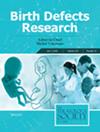A Single Cell Transcriptomic Fingerprint of Stressed Premature, Imbalanced Differentiation of Embryonic Stem Cells
Abstract
Background
Miscarriages cause a greater loss-of-life than cardiovascular diseases, but knowledge about environmentally induced miscarriages is limited. Cultured naïve pluripotent embryonic stem cells (ESC) differentiate into extra-embryonic endoderm/extraembryonic endoderm (XEN) or formative pluripotent ESC, during the period emulating maximal miscarriage of peri-implantation development. In previous reports using small marker sets, hyperosmotic sorbitol, or retinoic acid (RA) decreased naïve pluripotency and increased XEN by FACS quantitation.
Methods
Bulk and single cell (sc)RNAseq analyses of two cultured ESC lines was done, corroborated by qPCR. Transcriptomic responses were analyzed of cultured ESC stressed by Sorbitol, with Leukemia inhibitory factor (LIF + ; stemness growth factor), RA without LIF to control for XEN induction, and compared with normal differentiation (LIF − , ND).
Results
Sorbitol and RA increase subpopulations of 2-cell embryo-like (2CEL) and XEN sub-lineages; primitive, parietal, and visceral endoderm (VE) cells and suppress formative pluripotency, imbalancing alternate lineage choices of initial naïve pluripotent cultured ESC compared with ND. Although bulk RNAseq and gene ontology (GO) group analyses suggest that stress induces anterior VE-head organizer and placental markers, scRNAseq reveals relatively few cells. But VE and placental markers/cells were in adjacent stressed cell clusters in the UMAP, like recent, normal UMAP of conceptuses. UMAPs show that dose-dependent stress overrides stemness to force premature lineage imbalance.
Conclusions
Hyperosmotic stress, and other toxicological stresses, like drugs with active ingredient RA, may cause premature, lineage imbalance, resulting in miscarriages or birth defects.

 求助内容:
求助内容: 应助结果提醒方式:
应助结果提醒方式:


